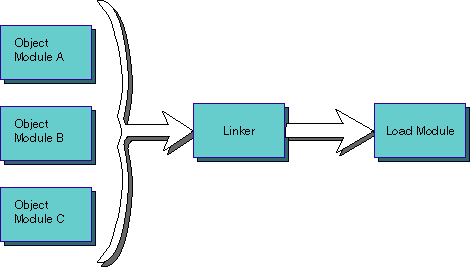Enterprise-wide programs are hundreds of thousands of lines long and take hundreds of programmers and support staff. It just would not work if they were all working on one big monster source program.

In assembly language the pieces of a big application program can be written as separate source files and assembled into separate object modules. The separate object modules are then combined by a linker into a load module, an executable file.
This is how all modern software of any appreciable size is written. The object modules do not need to be created from assembly language source. A compiler of a high level language (such as C) creates object modules that look the same as those from the assembler. In the picture, object module A might be from an assembly program, object module B might be from a FORTRAN program, and object module C might be from a COBOL program.
For many years, the only common languages that supported separate translation were Assembly, FORTRAN, and COBOL. For many years, the only common languages used in production were Assembly, FORTRAN, and COBOL. BASIC did not support separate compilation; BASIC was never used for writing big applications. Pascal did not support separate compilation; Pascal was never used for writing big applications. C supported separate compilation; C is now the dominant language for writing applications.
C compilers come with libraries of useful functions. The standard math library contains functions like sin, cos, and rand. What do you suppose a software library is?